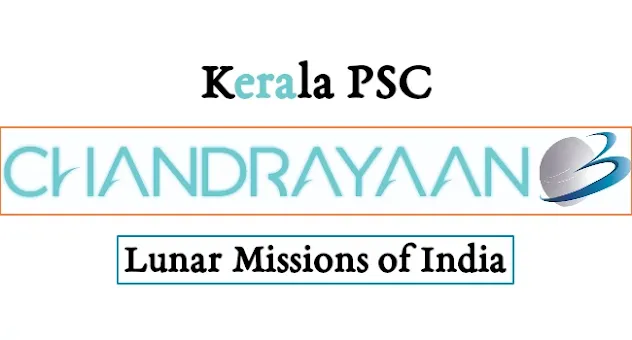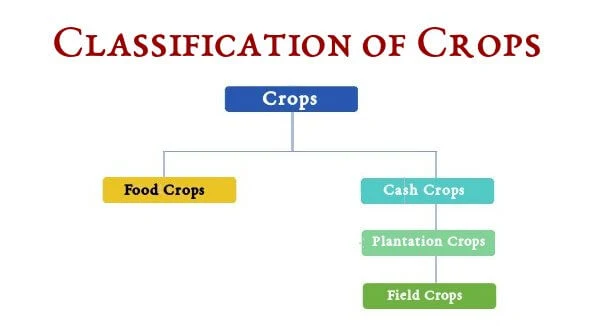Chandrayaan is the name given to the series of India's ambitious lunar exploration missions that aim to study the Moon's surface, composition, and origin. It has captivated the world's attention with its scientific achievements and technological prowess.
The Chandrayaan programme is managed by the Indian Space Research Organisation (ISRO) and it has gained significant recognition on the global stage.
In Sanskrit, the terms 'Chandra' means 'Moon' and 'yaan' means 'craft' respectively, while its rover 'Pragyaan' and lander 'Vikram' indicate 'wisdom' and 'valor,' respectively.
India's foray into lunar exploration began in earnest with the launch of Chandrayaan-1 in 2008, followed by Chandrayaan-2 in 2019.
With the Chandrayaan 3 mission success, India became the first nation to land on the moon’s south pole and the fourth (after Russia, the US, and China) to land successfully on the lunar surface.
In this article, we will learn all about the Chandrayaan missions of India so far for the Kerala PSC exam. This topic is important for the science and current affairs section of the KPSC syllabus.
Lunar Missions of India
Chandrayaan 1 (2008)
- To create a 3D map of the Moon's surface.
- To analyze the Moon's mineral composition.
- To search for water molecules on the lunar surface.
Key facts:
- First Lunar Mission of India.
- The 4th nation in the world to send a lunar mission.
- Launched on – October 22, 2008.
- Launched from – Sriharikotta.
- Launch Vehicle – PSLV C11.
- Designed and developed by – VSSC (TVM)
- With the help of Russia.
- Weight – 1380 Kg.
- Total Cost – ₹ 386 cr.
- moon impacter
- ISRO Chairman – G. Madhavan Nair.
- Project Director – M. Annadurai.
- Stopped functioning on - 2009 August 29.
- Achievements:
- Detected traces of water vapor on the surface of the moon.
- Evidence of caves formed by an ancient lunar lava flow.
Chandrayaan 2 (2019)
- Study the lunar terrain, atmosphere, and composition.
- Search for water and minerals on the Moon.
- Analyze the Moon's seismic activity.
- Deploy a rover to explore the lunar surface.
Key facts:
- Second Lunar Mission of India.
- The 1st Indian expedition to attempt a soft landing on the lunar surface with home-grown technology.
- Launched on – July 22, 2019.
- Launched from – Satish Dhawan Space Centre, Sriharikota
- Lander – Vikram.
- Rover – Pragyan.
- Launch Vehicle – GSLV Mk III-M1.
- Weight – 3,877 kg.
- Total Cost – ₹ 978 cr.
- ISRO Chairman – K. Sivan.
- Project Director – Muthayya Vanitha.
- Mission Director – Ritu Karidhal.
- First interplanetary mission in India to have females as both the Project Director & Mission Director.
Chandrayaan 3 (2023)
- To demonstrate the ability to soft-land on the moon.
- To demonstrate the rover Vikram’s ability to move on the moon.
- To conduct in-situ (on-site) scientific experiments.
Key facts:
- India's third lunar mission.
- India became the first country to land on the moon's south pole.
- India became the first country to conduct a soft landing on the Moon’s south polar region.
- The 1st Indian mission to explore the lunar terrain with home-grown technology.
- India became the 4th country ever to soft-land on the lunar surface, after USA, Russia, and China.
- Launched on – July 14, 2023.
- Launched from – Satish Dhawan Space Centre, Sriharikota
- Launch Vehicle – GSLV Mk III (LVM3 M4).
- Weight – 3,900 kg.
- Total Cost – ₹ 615 cr.
- ISRO Chairman – S. Somanath.
- Project Director – P. Veeramuthuvel.
- Mission Director – S. Mohanakumar.
- Components –
- does not have a separate orbiter.
- Landed successfully on – August 23, 2023.
- Achievements:
- Detected the presence of Sulphur, calcium, and many metals such as iron, chromium, titanium, manganese, and aluminum on the lunar surface.
- Detected the presence of oxygen in the form of ilmenite (FeTiO3) in the soil.
- RAMBHA reported relatively low plasma densities above the lunar surface varying from 5 to 30 million electrons per m³.
- Vikram lander recorded a ‘moonquake’ and detected an ultra-thin layer of plasma in the lunar atmosphere.
| Carrier | Payload | Function |
|---|---|---|
| Propulsion Module | Spectro-polarimetry of Habitable Planet Earth payload (SHAPE) | * to explore the exo-planets for habitability by studying reflected light. * to conduct novel Spectropolarimetric studies of Earth from lunar orbit. |
| Lander Module (Vikram) | Langmuir Probe (LP) | to measure the near-surface plasma (ions and electrons) density |
| Radio Anatomy of Moon Bound Hypersensitive Ionosphere and Atmosphere (RAMBHA) | ||
| Instrument for Lunar Seismic Activity (ILSA) | to measure the seismicity around the landing site. | |
| Chandra’s Surface Thermophysical Experiment (ChaSTE) | to measure the thermal conductivity and temperature. | |
| Passive Laser Retroreflector Array (LRA) from NASA | for lunar laser ranging studies. | |
| Rover (Pragyan) | Alpha Particle X-ray Spectrometer (APXS) | to determine the elemental composition (Mg, Al, Si, K, Ca, Ti, Fe) |
| Laser Induced Breakdown Spectroscope (LIBS) | to detect the chemical Composition and infer mineralogical composition. |
| Mission Name | Impact Points / Landing Point |
|---|---|
| Chandrayaan 1 | Jawahar Point |
| Chandrayaan 2 | Tiranga Point |
| Chandrayaan 3 | Shivshakti Point |
Chandrayaan-3 & the Kerala Connection
📝SideNotes:
- The visible dark and light patches of the Near side of the Moon (the side which always faces the earth) are known as – Maria.
- The largest, deepest, and oldest basin recognized impact basin on the moon – Aitken Basin Edge of the South Pole.
- The nickname of the launcher of Chandrayaan 3, GSLV Mk III – Fat Boy.
- S. Somanath – Sreedhara Panicker Somanath.
- 10th ISRO Chairman.
- 5th Malayali ISRO Chairman.
- Secretary of Department of Space.
- Ex-officio chairman of both the Space Commission
- Belong to – Thuravoor, Alappuzha.
- Served as –
- Director of Vikram Sarabhai Space Centre (2018-2022).
- Director of Liquid Propulsion Systems Centre (2015-2018).
- Malayali ISRO Chairmans so far – (5)
- MGK Menon (1972), K. Kasthurirangan (1994-2003), G. Madhavan Nair (2003-2009), K. Radhakrishnan (2009-2014), S. Somanath (2022).
- On which date Chandrayan of India was launched? 2008 October 22. (Eligibility Test for Lab Assistant in KHSE, 2019)
- Which of the following statements are applicable to the Chandrayaan-1 Mission? (Welfare Organiser, 2022)
- It was launched in 22 October 2008.
- Launch vehicle is PSLV-C11.
- It aimed to understand lunar volcanic processes.
- The Mission aims to make a soft landing on the surface of the moon
Thanks for reading!!!








Post a Comment
Post a Comment